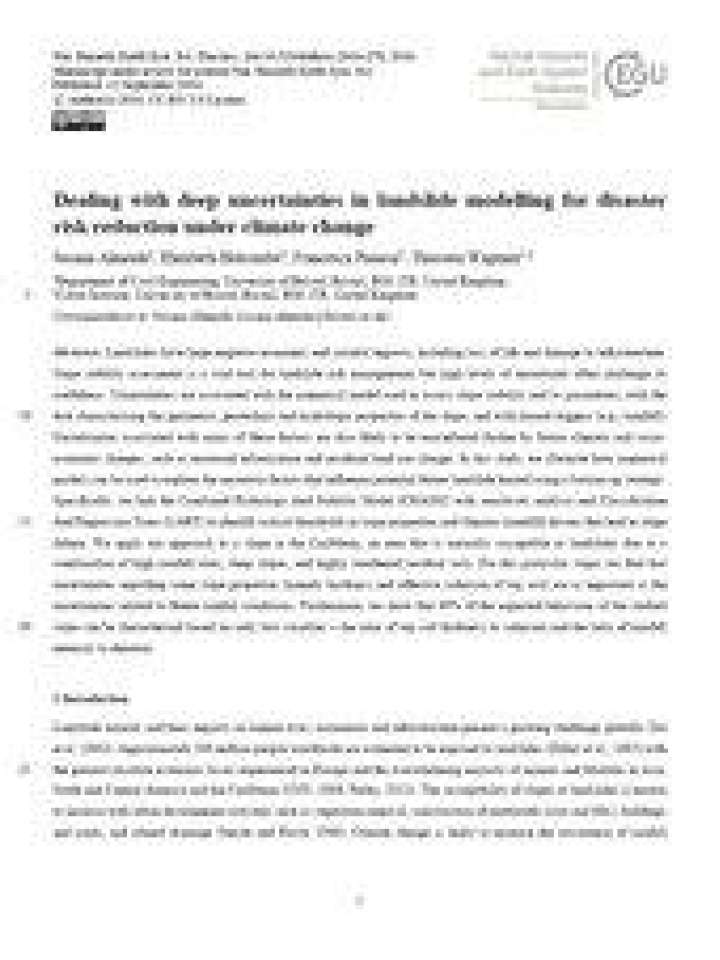Dealing with deep uncertainties in landslide modelling for disaster risk reduction under climate change
This study illustrates how numerical models can be used to explore the uncertain factors that influence potential future landslide hazard using a bottom-up strategy. The authors apply their approach to a slope in the Caribbean, an area that is naturally susceptible to landslides due to a combination of high rainfall rates, steep slopes, and highly weathered residual soils. For this particular slope, the main finding is that uncertainties regarding some slope properties (namely thickness and effective cohesion of top soil) are as important as the uncertainties related to future rainfall conditions.
This has the following implications for decision-makers:
- Decision-makers may seek to provide funding for targeted data acquisition to reduce uncertainty about the values of these parameters in order to improve understanding of how likely a slope is to fail.
- Decision-makers could also use the knowledge gained from studies to target management practices to improve slope stability or to develop options to mitigate consequences of slope failure.
- The methodology developed in this study could be used to quantify the impact of different management options on landslide occurrence thresholds, providing an objective measure of the potential value of each strategy that can support debate amongst disaster risk reduction practitioners.
Natural Hazards and Earth Systems Sciences, September 2016. This document is published under a Creative Commons Attribution 3.0 Unported licence.
Explore further
